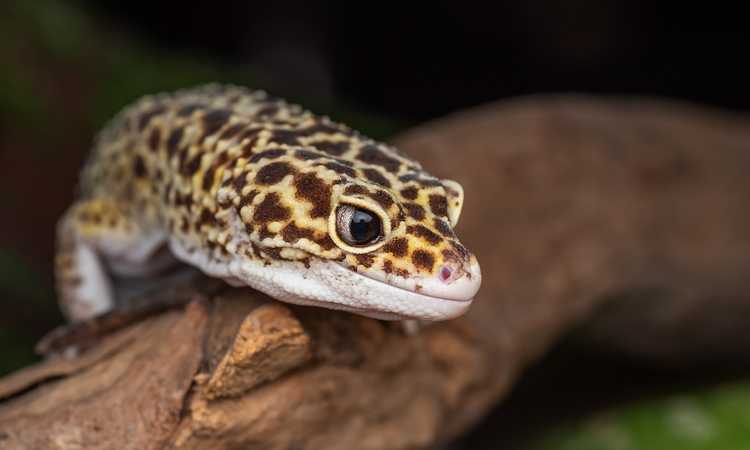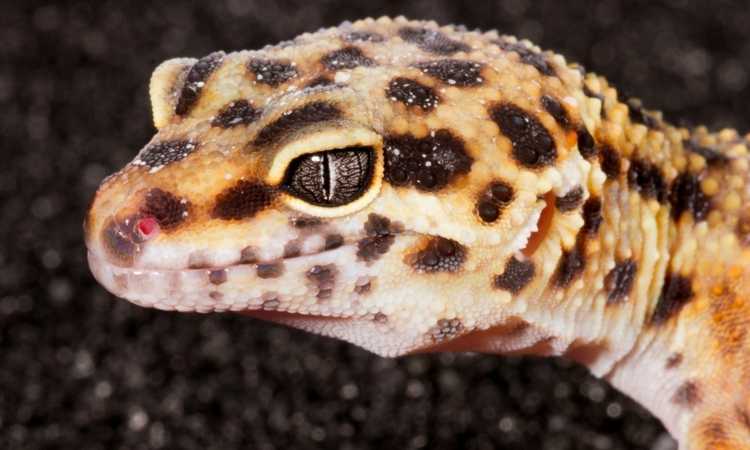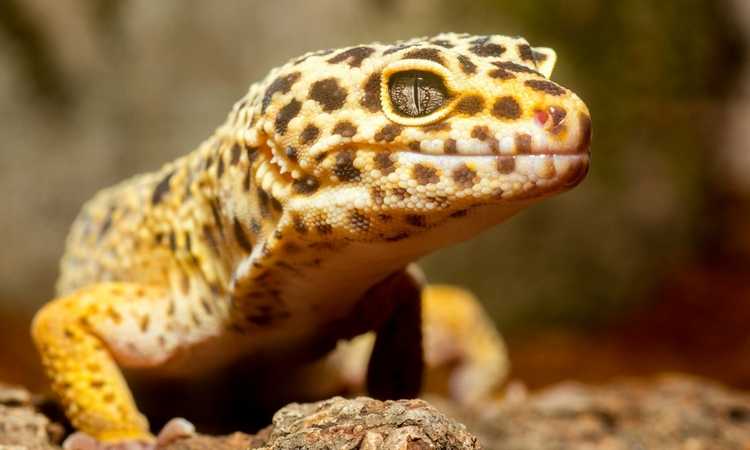Whether you’re a first-time pet owner or you’ve had a gecko for years, there are several things you need to know to keep your pet healthy. Fortunately, we’ve put together a guide that will help you care for your leopard gecko pet. Read on for the best tips on how to care for your leopard gecko.

What to feed your leopard gecko
Geckos love eating insects
Whether you’re a new pet owner or you’ve had a pet leopard gecko for a while, you’ll want to make sure you’re feeding your pet the right foods. Having the right diet can have a huge impact on the health and happiness of your pet.
Leopard geckos are insectivores, meaning they eat insects and worms. However, they can also eat other lizards and even baby rodents. As such, you’ll want to make sure your leopard gecko has a wide range of foods to eat.
Crickets are an easy way to give your leopard gecko the nutrition it needs. They contain high levels of protein and fiber. Grasshoppers are another good choice. These insects are low in fat. However, you should be aware that insects contain poisons and insecticides. You should also change crickets regularly.
Gut loading insects for gecko feeding
You can also give your leopard gecko insects that have been gut loaded. Gut loading involves feeding insects on small pieces of fruit to make sure they receive the necessary vitamins and minerals. It’s best to do this at least 12 to 48 hours before feeding.
Proper watering of geckos
You should also make sure that your leopard gecko’s water bowl is always full of fresh, clean water. This will help keep the environment of your enclosure humid. It is also a good idea to supplement your leopard gecko’s diet with a vitamin and mineral supplement.
Leopard geckos are mostly nocturnal. They emerge an hour before sunset. They spend their time in clefts between rocks. They may also use the water bowl as their latrine.
If you’re unsure of the type of food your leopard gecko should be eating, you should consult a veterinarian. Depending on the animal’s age, it might be best to avoid feeding them raw meat. Raw meat is high in fat and can carry dangerous bacteria.
Proper leopard gecko diet
Whether you’re a beginner or an experienced lizard lover, it’s important to know how to feed your Leopard Gecko pet. These tiny lizards are popular pets for many reasons. In addition to being a fun and cheap pet, leopard geckos are also easy to care for. They are not aggressive and can live up to 20 years.
Leopard Gecko pets need a variety of foods to thrive. The proper diet will depend on their age and health. Fortunately, there are many types of foods available. These include crickets, mealworms, hornworms, waxworms, dubia roaches, and superworms.
Crickets are an important part of a leopard gecko’s diet. These insects are a good source of protein and phosphorus. Crickets are also low in fat and calorie content. They’re also a great source of calcium.
If you don’t want to feed crickets to your Leopard Gecko, you can feed them a nutritious powdered diet. There are also fresh vegetables to choose from. You can order these foods from your local pet store.
Waxworms
Another option is to feed your Leopard Gecko waxworms. They’re soft and fatty, and they’re a great treat. These worms also contain calcium.
You should be sure to dust your crickets with calcium powder. The powder will help to increase the calcium level in your Leopard Gecko.
Feed your Leopard Gecko 3 to 5 insects per feeding. If you’re feeding your Leopard Gecko a diet that includes mealworms, dust them with calcium powder as well.
Gecko supplements and vitamins
If you want to make sure your Leopard Gecko has a healthy diet, you can also feed your pet a specialized reptile multivitamin. You can buy these supplements at most pet stores. Leopard geckos should be given a calcium supplement, which will help keep them healthy. This is the calcium supplement I personally use for my geckos.
Leopard geckos should also have daily access to clean water. They also need to be kept in an appropriately sized habitat.
Read This: What Should I Feed My Leopard Gecko?

Gecko Habitat Basics
Keeping your leopard gecko pet healthy and happy requires a bit of special attention. You can make sure your lizard is getting everything it needs by following these tips.
Geckos need proper lighting
In addition to the right food, you need to make sure that your leopard gecko is getting the right lighting. They need about 12 hours of dark during the winter and 12 hours of light during the summer. This helps them regulate their sleeping patterns and day/night cycles.
Finding the right humidity to keep geckos healthy
It is also important that your gecko is getting the right amount of humidity. A sweet spot between 20% and 40% is ideal. Keeping your leopard gecko in a habitat with too much humidity can lead to respiratory problems and dehydration.
A leopard gecko’s habitat should mimic its natural environment. This means providing them with a temperature range of about 60 degrees F, and a humidity range of about 20 to 40%.
Gecko Habitat Substrate
Reptile carpet, paper towels, or newspaper
It’s important to make sure your gecko has the right substrate (flooring) in its tank. Leopard geckos can be quite vocal. They will often whip their tail when they get excited or focus on mating. They also like to dig, so it is important that the flooring in their habitat is not abrasive. You can purchase special carpeting strips for your reptile tank.
If you are on a tight budget, paper towels and newspaper are a good option for substrate. These should be plain white and should be replaced every couple days.
Sphagnum mom
Another good substrate is sphagnum moss. This is a great option, as it is absorbent and provides a good level of moisture. It is also relatively easy to maintain.
If you have a budget, you can also opt for natural stone slabs. These offer a warm surface that is easy to clean. They also provide a low-maintenance option for bedding. However, these need to be deep-washed every couple of weeks.
Maintaining high humidity
Keeping your leopard gecko in high humidity is not a very good idea. A high humidity environment can cause a host of problems including pneumonia, skin infections, dehydration, and bacterial growth.
A humidity gauge is a great way to measure the humidity in your leopard gecko tank. Many of these gauges are synchronized with thermometers to help you make the right adjustments to maintain the correct humidity level.
Another option is to purchase a humid hide. A good humid hide should be filled with moist sphagnum moss. The moisture in the moss will help your leopard gecko maintain the proper skin shedding. You will need to check the humidity of your leopard gecko’s hide at least twice a week.
The best way to maintain the proper humidity in your Leopard gecko’s tank is to provide a humid hide. It is recommended that you place the hide on the warm side of the tank. The optimum humidity level for your Leopard gecko should be between 30 to 40 percent, no lower than 20% humidity.
Check humidity with hygrometer
You should also purchase a hygrometer to keep track of the humidity levels. A hygrometer is a great piece of equipment that is not expensive. It can be placed in the middle of the terrarium to monitor the temperature and humidity. It is best if you purchase a high quality hygrometer.
Providing your leopard gecko with the right amount of humidity can help your leopard gecko maintain a healthy and happy life. The right amount of moisture will help your Leopard gecko pass its substrate through its digestive tract.
The most important thing to remember when maintaining high humidity is to not overdo it. Providing your Leopard gecko with the proper level of moisture may require you to increase the humidity level of your house.

Breeding season
During breeding season, a leopard gecko requires a lot of energy and attention. They are an opportunistic feeder and eat many different kinds of animals. Their diet is primarily crickets, spiders, grasshoppers, caterpillars, small scorpions and invertebrate species. They also eat plants occasionally.
Leopard geckos have an active breeding season that runs from January through September. Breeding females will start laying eggs after mating. They lay a clutch of one or two eggs. The clutches will hatch after a few months.
How To Get Ready For Breeding Season
You need to prepare for breeding season by providing a warm, moist environment. You will also need to add protein-rich insects to your leopard gecko’s diet.
Leopard geckos are considered a very easy pet to breed. However, the process is stressful for females. They have a shorter life expectancy than non-breeding females.
Leopard gecko breeding is a fun hobby but requires a lot of time and resources. You will also need to provide additional food and vitamins during the breeding process.
What To Expect When Your Gecko’s Expecting
Female leopard geckos lay one or two eggs each clutch. You can provide a small amount of food to help them during their egg-laying process.
In addition, you will need to provide an incubator for your leopard gecko eggs. Egg incubation materials include plastic boxes, deli cups and vermiculite. An accurate thermometer is also a good idea for temperature monitoring.
When you are ready to breed, you can use a harem setup for the males. This will help to reduce the stress on the females.
Read This: The Fascinating Secrets of Gecko History
In conclusion, if you’re considering adding a pet gecko to your home, do your research to be sure you can provide the proper care they need to stay healthy and happy. Geckos are low-maintenance lizards that make great pets for people of all ages, but there are still some things you should know before bringing one home. With the proper housing, diet, and care, your pet gecko will thrive and provide you with years of enjoyment.
Related posts:

Hi – I’m Erika, the lead gecko enthusiast here at Geckopedia! I write articles about pet geckos, including what to feed your leopard gecko and how to help your pet gecko live a long, happy life! I graduated with advanced degrees from UC-Berkeley, the University of Southern California (USC) and Indiana University-Bloomington, where I studied Biology and Animal Science. I use my experience to help others learn about gecko care, and I am an advocate for all topics gecko related!
